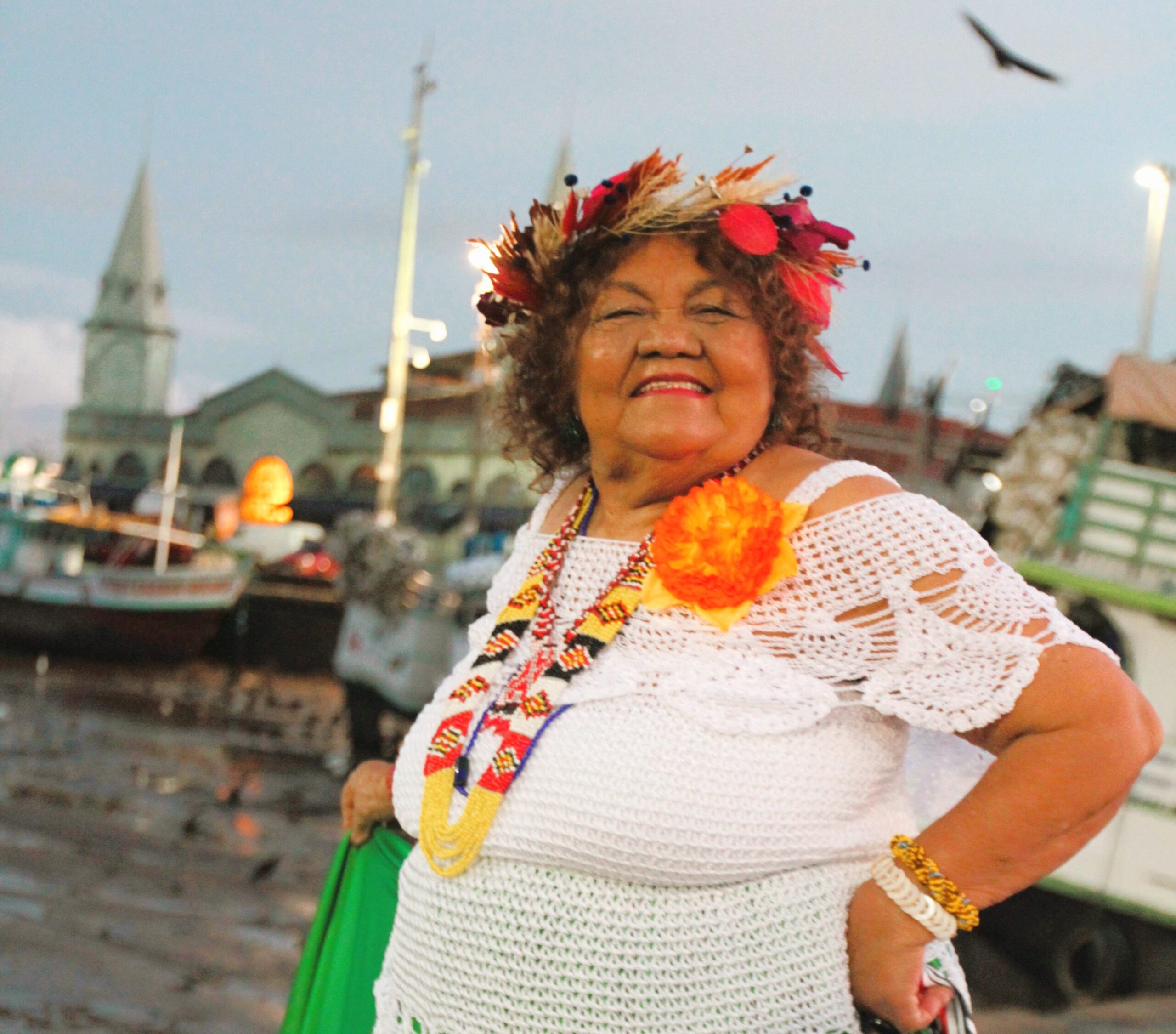
Dona Onete at COP30: the Ancestral Voice of the Amazon
The master of Pará’s popular culture speaks about nature, art, education, and the role of the women who sustain the forest
Sarah Mascarenhas, from NINJA’s Collaborative Coverage at COP30
Belém is experiencing COP30 as someone who opens their home to the world. Amid diplomatic negotiations, hurried corridors, and official speeches, there exists a territory that has never needed translation: the territory sustained by Amazonian women. It is precisely from this deep, everyday, ancestral layer that Dona Onete emerges—retired teacher, composer, and guardian of herbs, rhythms, and memories that shape the silent pedagogy of the forest.
Interviewing Dona Onete at COP30 is a lesson that the Amazon cannot be explained through the logic of data. It expresses itself in nuances of subjectivity. Her presence at the conference restores humanity to the climate debate and reminds the world of something essential: the forest is made of people. Of women who plant healing, teachers who shape generations, youth who awaken, rhythms that narrate the territory from within. Faced with a global summit that so often distances itself from real life, her voice becomes indispensable.
The inspiring artist views COP30 with a calm yet firm hope. She sees youth awakening, teachers engaged, and the world finally looking at the Amazon with greater attention. But she reminds us that no decision will take effect if education does not once again embrace the territory and if the women who sustain the forest are not heard. For her, the COP is an important movement, but the real future continues to be planted every day along riverbanks, in the yards of herb-keepers, in improvised classrooms, and in the rhythms passed across generations. The Amazon speaks, and Dona Onete is one of its clearest voices.
Read our full conversation with the queen of carimbó, who sings of Ver-o-Peso and exalts the wisdom of the forest, education, and youth.
1. How does nature shape your singing and your way of being in the world?
“Nature—now that I’m retired, no longer teaching or doing many of the things I used to—nature is what moves me. I felt I needed to speak about everything I learned as a very young child, and now it’s all coming back. We are, above all, a product of the environment, because the Amazon used to be an unknown place, and now it is becoming known. But I’ve been talking about many things for a long time—things people are only now beginning to research. That’s what moves me. It’s like saying: let’s stir the waters. Then everything comes to the surface and I begin to sing, to speak in verses and prose, and to sing in my songs.”
2. In what ways does art help bring visibility to the Amazon?
“It’s through art that we’ve been able to show and give more visibility to our Amazon, because we speak about everything we have here—food, climate, everything we’re talking about now. And as proof, look at what’s happening. People came from everywhere to see up close what the Amazon has. If in the past men cut down trees for survival—because in earlier times it was about survival—now it’s about greed.”
3. What role do women play in preserving Amazonian knowledge?
“Women were the ones who planted the most and who still plant herbs. Here in Pará, along the rivers, you find every kind of medicinal herb. And the ones who plant these herbs aren’t men, the ones who plant them are women. Men plant vegetables, cabbage… but we plant perfumes, we plant homemade medicines. And who knows? Maybe someday these plants will help cure many of the world’s illnesses.”
4. What would you like the world to hear from Amazonian women at COP30?
“I think it’s wonderful, because our youth has become interested. As an old teacher, I am happy to see teachers engaged alongside their students. They say things I never imagined. Maybe not now, but in time these young people will take care of the planet with more affection. That’s what we need: to educate them to care for this legacy the COP is leaving.”
5. How do you see young people reinventing and carrying the rhythms of the Amazon?
“This wisdom constantly comes from rural teachers, from women who fight for their communities. Carimbó is the most famous music of the countryside, then comes guitarrada, lambada… Here in Pará we have many rhythms. As a woman and a teacher, I carry the Amazon with me: I speak of rivers, of water, of ancestral movements. And now this is being recognized.”
6. Can music be a tool for caring for the planet?
“I believe so. At least I’m doing my part. And many singers from Pará as well. We’re talking about the environment, about the climate, about so many things people never thought about. But it all came to the surface. If we don’t take care, what will become of our children? They’ll say we didn’t care for them, that we did nothing for them.”
7. What legacy do you wish to leave for future generations?
“I’ve heard many people say that I talk too much about women. Why do I sing so much about women?
Because I try to value our kind. Why wouldn’t I speak about us? If I don’t speak, others won’t. I value women, | lift us up. It’s not just the icing on the cake-l talk about the filling and the icing, I talk about women.
Women being more respected, families respecting each other more, and schools taking part too-teaching about family, about the city, about how Pará began and how many peoples mixed to form this wonderful place.”
